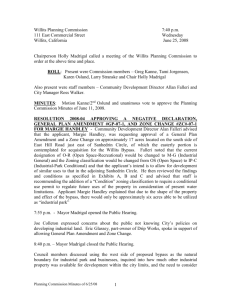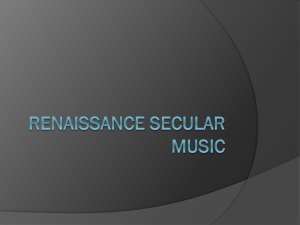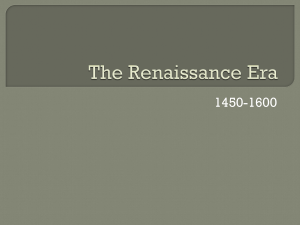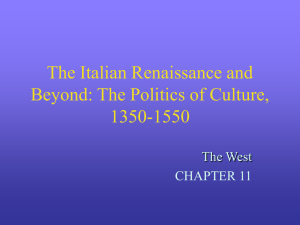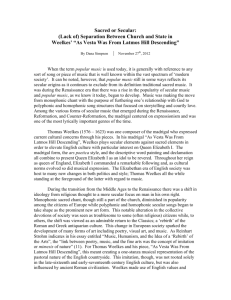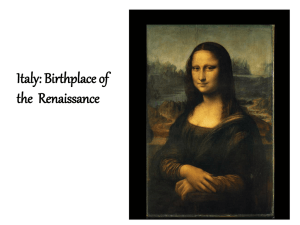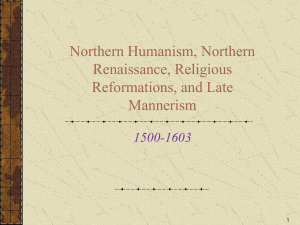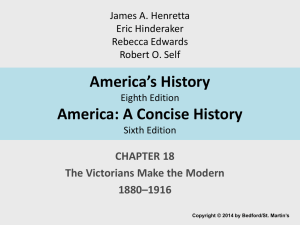Music as Expression - Bedford/St. Martin`s
advertisement
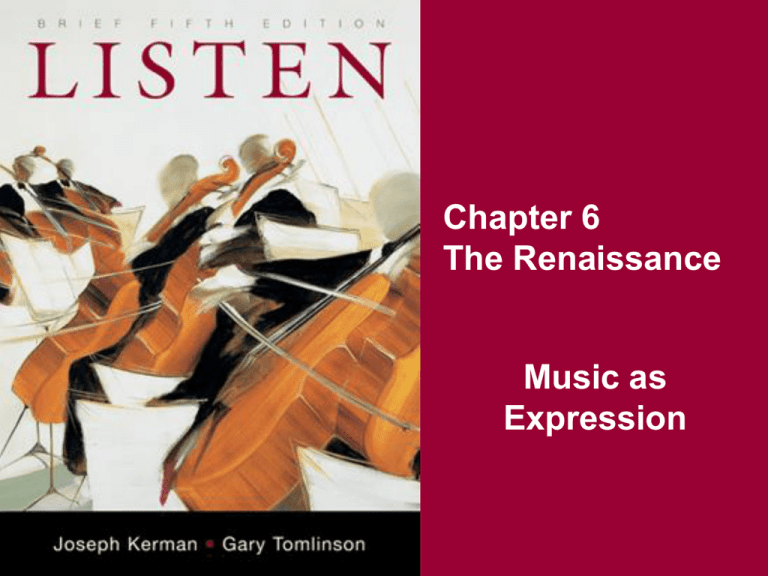
Chapter 6 The Renaissance Music as Expression Key Terms Declamation Word painting Italian madrigal English madrigal Music as Expression Composers inspired by descriptions of ancient Greek music • The power of music to arouse deep emotions • Orpheus and his lyre (or David and his harp?) Unlike earlier music, Josquin’s music began to “illustrate” words and phrases Two important developments • Accurate declamation • Word painting Declamation Declamation is the manner in which words are set to music Accurate declamation uses rhythms that closely match natural speech rhythms Starting with Josquin, composers began to use more accurate declamation Late Renaissance reliance on homophonic texture reflects increasing use of good declamation Word Painting Musical illustration of the meaning of a word or phrase • • • • Rapid notes for “fly” or “glitter” High notes or upward leaps for “up” or “heaven” Descending motive or a rest for “sigh” Dissonances or chromatic harmonies for “grief,” “cruel,” “torment,” “harsh,” or “alas” The Madrigal Originated in Italy around 1530 Short composition set to one-stanza poem Most often a love poem Rapid change of ideas and images echoed by changing motives and textures of musical setting • Alternation between imitation and homophony (similar to Mass and motet) One singer to a part, meant for intimate setting The Madrigal But unlike Mass or motet: • • • • • Points of imitation were shorter Imitation was less strict Often much more homophony Words were much more important Declamation and word painting used with great variety and subtlety No genre realized Renaissance ideal of music as expression as fully as the madrigal Weelkes, “As Vesta Was from Latmos Hill Descending” Madrigal also proved enormously popular in late Renaissance England Words for Weelkes’s madrigal written to honor Queen Elizabeth (Oriana!) Bright, exuberant musical setting • • • • Simple rhythms Clear harmonies Crisp, engaging melodic motives Accurate declamation and frequent word painting Word Painting in Weelkes’s Madrigal
